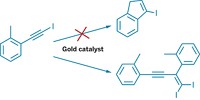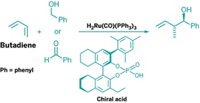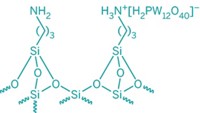Advertisement
Grab your lab coat. Let's get started
Welcome!
Welcome!
Create an account below to get 6 C&EN articles per month, receive newsletters and more - all free.
It seems this is your first time logging in online. Please enter the following information to continue.
As an ACS member you automatically get access to this site. All we need is few more details to create your reading experience.
Not you? Sign in with a different account.
Not you? Sign in with a different account.
ERROR 1
ERROR 1
ERROR 2
ERROR 2
ERROR 2
ERROR 2
ERROR 2
Password and Confirm password must match.
If you have an ACS member number, please enter it here so we can link this account to your membership. (optional)
ERROR 2
ACS values your privacy. By submitting your information, you are gaining access to C&EN and subscribing to our weekly newsletter. We use the information you provide to make your reading experience better, and we will never sell your data to third party members.
Synthesis
Environment guides reactions
March 6, 2006
| A version of this story appeared in
Volume 84, Issue 10
Catalytic reactions can be steered in unusual directions by controlling the catalyst's chemical environment, according to a study conducted at the University of California, Berkeley. Alexander Katz, John D. Bass, and coworkers have shown that by immobilizing primary amines on silica and surrounding the catalytic amine groups with cyano groups, the Henry reaction-a C-C bond-forming reaction that couples aldehydes and nitroalkanes and ordinarily forms olefin products using primary amine catalysts-can instead be used to prepare alcohols with high selectivity (J. Am. Chem. Soc., published online Feb. 24, dx.doi.org/10.1021/ja057395c). The group explains that in the presence of native silanol (SiOH) groups, the reaction forms olefins by way of an acid-base mechanism. In contrast, the polar, aprotic environment associated with cyano groups guides the reaction to produce alcohols via an ion-pair mechanism that was postulated previously for primary amine catalysts but not verified experimentally until now.





Join the conversation
Contact the reporter
Submit a Letter to the Editor for publication
Engage with us on Twitter